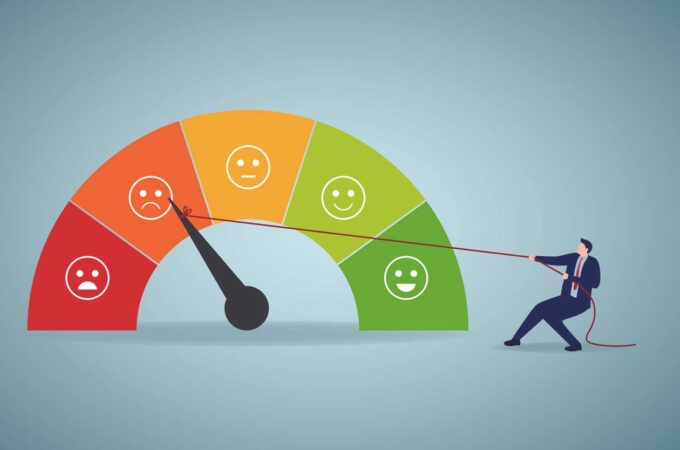
Micropayment: What it is, How it Works in Fintech
In the world of finance and technology, micropayments are like tiny financial transactions that play a big role. Imagine small payments happening online, where you exchange just a little bit of money for digital stuff or small services. It’s a quick and low-cost way to buy things like articles, games, or other online goodies. Micropayments have become a cool thing in fintech, changing the game for how we handle small transactions. In this journey through micropayments, we’ll explore how they work and why they matter in the digital economy. It’s like looking at the small superheroes of the financial world – making a big impact, one tiny payment at a time.
What Is a Micropayment?
Micropayments are minute financial transactions designed for the digital landscape, facilitating the exchange of small amounts of money for various online goods and services. Unlike traditional transactions, micropayments involve tiny sums, often ranging from a fraction of a cent to a few dollars. These transactions are integral to the digital economy, enabling users to access specific content, make in-app purchases, or unlock premium features without committing to significant expenses. Micropayments are particularly prevalent in online gaming, digital media, and other internet-based services, providing a seamless and efficient way for users to engage with and support digital content creators and service providers.
Examples of Micropayments
Consider a situation where a user wishes to access premium content on a news website. Instead of committing to a monthly subscription, they might opt for a micropayment model, paying a nominal fee, such as $0.25, to unlock a specific article. In online gaming, a player might purchase in-game items or enhancements for as little as $0.99 to enhance their gaming experience. Streaming platforms also leverage micropayments, allowing viewers to tip content creators with small amounts, like $1, as a token of appreciation.
Moreover, consider a Forex trading platform operating on a white label basis using MetaTrader 4 (MT4). Brokers utilizing MT4 white label solutions often engage in micropayments for each trade executed by their clients. These micropayments can be fractions of a cent per trade, showcasing the granularity and efficiency of micropayment systems in facilitating seamless and cost-effective financial transactions within the trading ecosystem.
How do Micropayments Work in Fintech?
Micropayments, operate through various models, each tailored to suit specific user preferences and transaction requirements.
Pay-As-You-Go:
One prevalent model in micropayments is the pay-as-you-go approach. This method involves users paying for a service or content as they consume it. For instance, streaming platforms often utilize this model, allowing users to pay a minimal fee for each song, movie, or article they access. This real-time payment structure is seamless, as users are charged based on their actual usage, making it ideal for sporadic or one-time transactions.
Prepay:
Another model is the prepay system, wherein users deposit a predetermined amount of funds into their accounts before accessing services. This stored value can be used for multiple micropayments until the balance is depleted. Prepay models offer a streamlined user experience, particularly for frequent users who wish to avoid the hassle of authorizing payments for each transaction. This method is commonly employed in applications like public transportation systems or digital wallets, ensuring a swift and frictionless payment process.
Post-pay:
In contrast, the post-pay model allows users to accumulate charges over a specific period, with payments settled at a later date. This is akin to a billing cycle, where users are billed for the micropayments they’ve made during the billing period. This model is common in subscription-based services, where users pay for the cumulative usage over a month or another predefined duration. Post-pay offers convenience, as users don’t need to authorize payments for every transaction, but rather receive a consolidated bill for their overall usage.
Benefits of Accepting Micropayments
Accepting micropayments can be a game-changer for businesses, unlocking a multitude of benefits that cater to both providers and consumers.
Enhanced Accessibility and Customer Loyalty: Micropayments enable businesses to offer low-cost products or services, opening doors to a wider consumer base. This accessibility fosters customer loyalty, as users can engage with and make small purchases without significant financial commitment.
Streamlined User Experience: Micropayments streamline the user experience by providing a quick and efficient transaction process. Consumers appreciate the simplicity of making small, instant payments, especially in the context of digital content, apps, or online services.
Quicker Cash Flow and Improved Liquidity: The real-time nature of micropayments contributes to faster cash flow for businesses. This accelerated financial turnaround can enhance liquidity and provide companies with the resources needed for operational growth and flexibility.
Reduced Transaction Costs: Micropayments often come with lower transaction costs compared to traditional payment methods. This reduction in costs is particularly significant when dealing with numerous small transactions, contributing to overall financial efficiency.
Monetization of Digital Content: Micropayments offer content creators a viable way to monetize their digital content on a micro-scale. This is especially relevant for platforms that distribute digital media such as music, articles, e-books, and digital art.
Fair Compensation Model: The use of micropayments supports a fair compensation model for digital content creators. Creators receive compensation for each individual piece of content, ensuring that their work is valued and incentivizing a continuous production of high-quality material.

How to Implement Micropayments
Setting up micropayments involves making it easy for small transactions to happen smoothly. First, a business needs to check its digital tools and choose a payment system that handles lots of small payments quickly and safely. The way customers and the business interact with this system should be simple and easy.
Then, the business needs to figure out how it wants to charge for its services—a small fee each time, a subscription, or some other way. It’s also important that the system works well on mobile devices since many people use their phones for payments.
Security is crucial. Making sure that the payment information is safe and protected is a big part of gaining trust from both businesses and customers.
Finally, it’s not a one-time setup. Keeping an eye on how many transactions are happening, what people think about the process, and making updates as needed ensures that micropayments continue to work well and match the goals of the business.
In conclusion, micropayments revolutionize how we handle small transactions in Fintech. They’re like the spare change you might use for a vending machine, but in the virtual world. Micropayments make it easy and quick to buy things online, especially low-cost items or services. They’re like bite-sized payments that add up to a convenient and efficient way to handle small transactions in the world of finance and technology. So, whether you’re buying a game upgrade, accessing premium content, or supporting your favorite content creator, micropayments make it all hassle-free and accessible.




